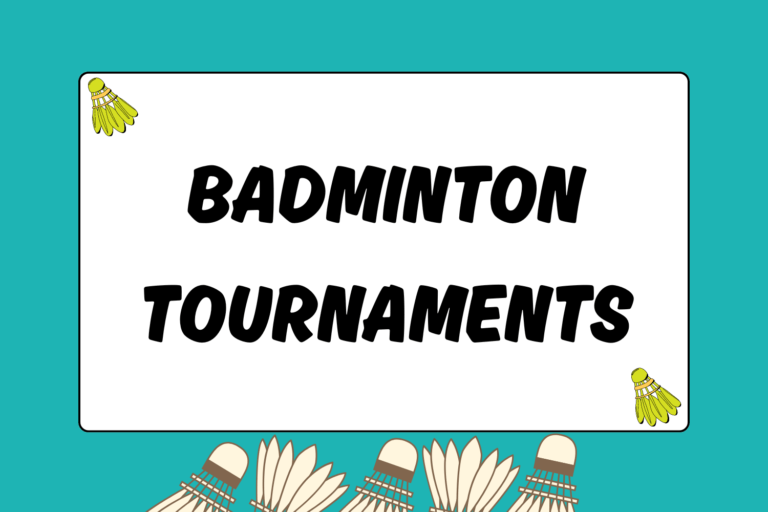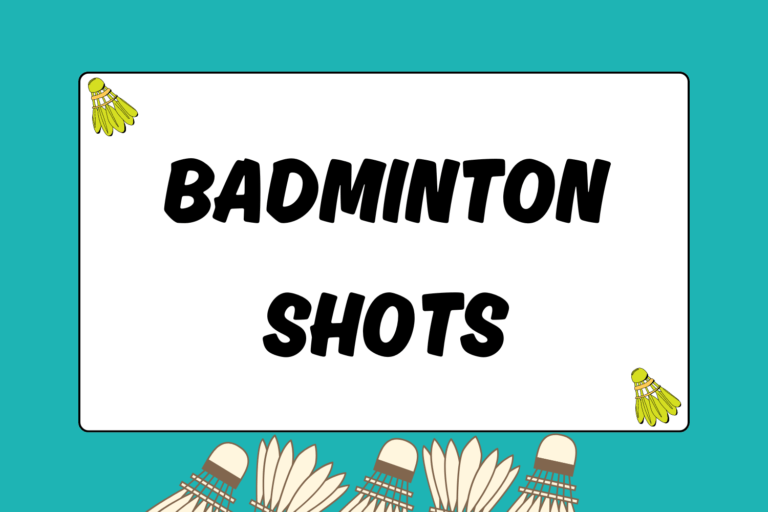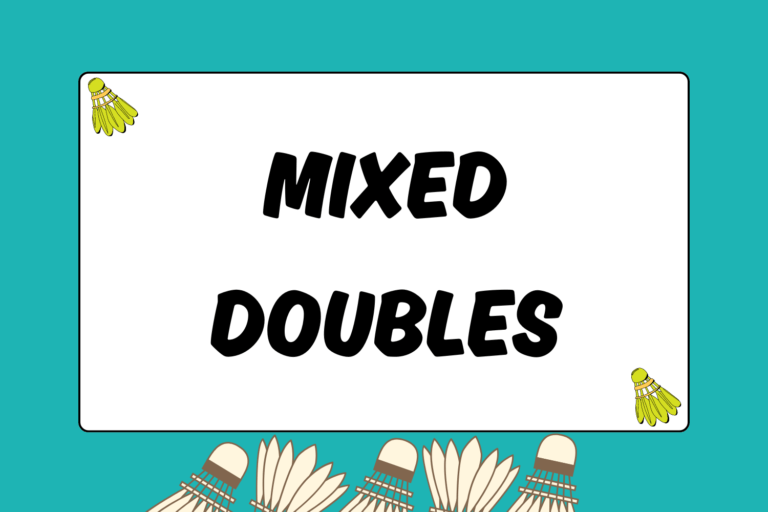Although drives are much more common in doubles than in singles, they’re still vital in both. Whether you’re defending smashes or trying to put a rally away, drives will prove to be a valuable shot in any game. After learning the fundamentals of a drive in this guide, you should be able to go out and do it in no time at all.
In a way, the drive is like the smash’s little brother. While a smash comes from a powerful swing hit at a sharp angle, the drive is a fast, flat shot from a quick racket flick. Here, the true power of the wrist is on display because there isn’t time for a big wind-up like a smash.
Step 1: Gripping the Racket
The drive is unique because it requires a specific grip to be hit properly. The panhandle grip is used solely for drives and should not be substituted for your forehand (a mistake some beginning players make). To learn the panhandle grip:
- Start by holding the racket with the forehand grip.
- While holding the racket up in front of you, rotate your wrist outward as far as you can. Notice that the racket head is not completely parallel with your body.
- In this position, rotate the racket handle outward until the head is completely parallel to your body.
- If held correctly, you should be able to drive the racket forward with the base of your pointer finger.
Hot Tip: Backhand Grip
For the backhand drive, you can simply use the traditional backhand grip. Place the upper half of your thumb flush with the wider part of the handle. Wrap the remaining fingers around the handle so your palm does not touch it.
Here, your thumb will act as the driving force for your backhand drives.
Step 2: Positioning Yourself
To prepare for a drive, position your body parallel to the net with your racket up in front of you. Having the racket in front will reinforce the habit of striking the shuttlecock while it’s out in front of you. Waiting until the shuttlecock is on your side will severely diminish your power.
Additionally, your weight should be on your toes with your knees slightly bent so that you’re prepared to move in any direction. Using the panhandle grip should allow you to angle your racket to cover both your forehand and backhand side.
Step 3: Hitting the Drive
The drive is a simple shot to learn because it doesn’t require a lot of movement. A drive is nothing more than a quick wrist flick with your forearm, providing force and guidance.
Make sure you hit the shuttlecock as soon as you can. This means that if a shot is coming straight at you, take a step forward as you hit it to provide extra power. Also, the sooner you return a shot, the less time your opponent has to react.
Step 4: Aiming the Drive
The lower a drive passes over the net, the better. Also, while it’s ideal to place the shuttlecock away from your opponent, it’s also viable to hit it directly at him.
Driving has the unique quality of being quick and unreadable, making it difficult to return. In this case, driving a shuttlecock towards the opponent’s body makes it awkward to return because there is no extension in the arm.
The key is to drive the shuttlecock as low over the net as possible in a spot that makes it difficult for your opponent to return.
Using Drives as Smash Returns
Among all the shots, smashes are tops in terms of sheer power and velocity, but they aren’t without drawbacks. In the immediate aftermath of a player finishing a powerful jump smash, two things are certain:
- The smash will reach his opponent before he lands on the ground.
- The smashing player will take longer than normal to recover to his base point.
From these two points, you can see that time clearly works against the smashing player. Not only will he have less time to recover for the next shot, he’ll also need more time to do so.
As such, it makes the drive an extremely effective shot against a smash. Driving a smash takes experience and timing, but once you master this technique, it will be an invaluable skill as you take your game to higher levels.
Shot Selection for Drives
While you can clear or drop virtually any shot in badminton, drives fit a specific niche. Compared to others, the shot selection for drives is very strict. You should absolutely never hit a drive in response to:
- Clears: Any clear will give you enough time to execute a full overhead stroke, which is preferred over a drive.
- Well-executed drops: Excellent drops really only allow you to hit a drop or clear in return. Forcing a drive when the shuttlecock is too far below is ill-advised.
Conversely, a good opportunity to drive is against:
- Drives: Driving back a drive increases the tempo and puts pressure on your opponent.
- Smashes: Drives use the energy from a strong smash against your opponent. Again, it puts pressure on your opponent, who will likely be off-balance.
- Any slow, high-arching drop: This sort of shot gives you a perfect chance for a driving kill shot.
Drive for Success
The drive is relatively easy to practice, but using it in a game setting is essential. This is the only way to refine your shot selection, which is just as crucial as your execution.
Follow the above advice, and you should quickly find what works and what doesn’t. Like drops, mere inches separate a good drive from a bad one. Keep working at it, and you’ll soon find driving an invaluable part of your badminton game.





